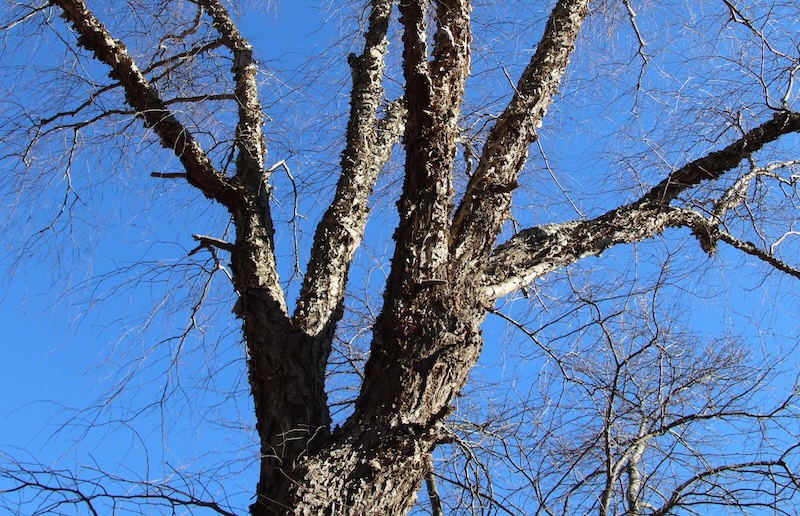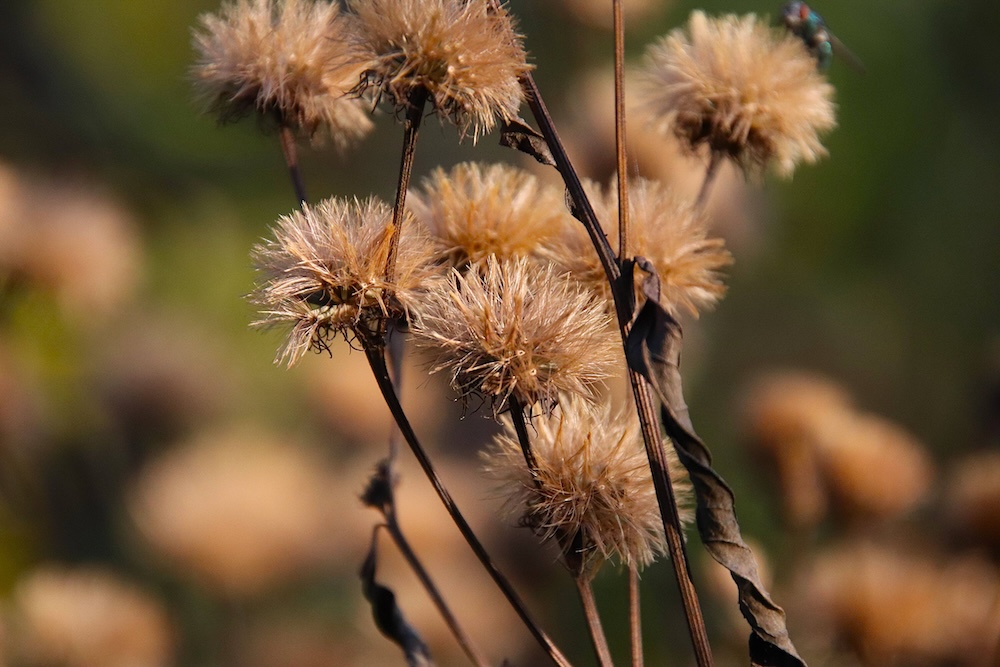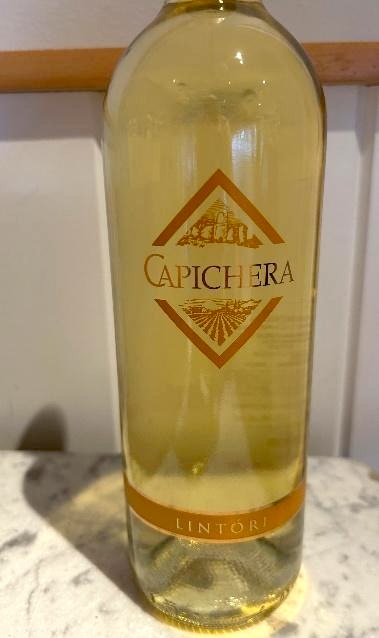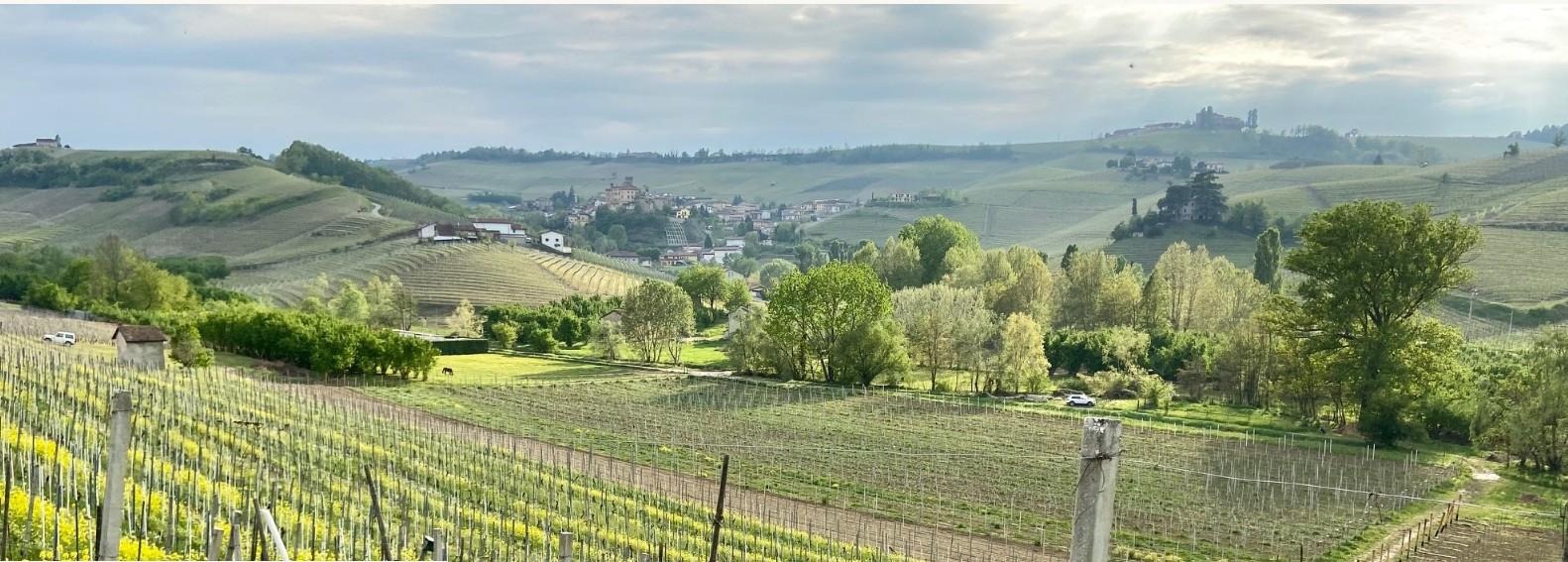


Nonpartisan and Education-based News for Centreville


The Spy Newspapers may periodically employ the assistance of artificial intelligence (AI) to enhance the clarity and accuracy of our content.
Ciao Tutti!
This weekend at Piazza Italian Market we will taste a white wine from the Langhe Nas-Cetta del Commune di Novello 2021 ($26.99, 12.5% ABV) from the Azienda Agricola Cogli l’Attimo in Novello, Piemonte. “Cogli L’Attimo” translates as “seize the moment”, which is a fitting phrase for how this wine has made its way to Piazza’s shelves. The grape’s name, nas-cetta, translates as “little girl is born” which is also fitting for a nascent winery as young as Cogli l’Attimo.

Vinitaly is the leading international wine & spirits trade fair for exhibitors, buyers and wine lovers. Last year, Emily attended Vinitaly and her focus was wine from small scale producers, one of which was Serena Anselma, whose first production was in 2021. She seized the moment and asked Emily for advice about breaking into the US market. Emily contacted one of Piazza’s importers, Doria Wines, who seek out artisanal winemakers. The brother and sister duo of Marco (Torino) and Cristina (DC) seized their moment and Marco visited Serena and now they represent Cogli L’Attimo! The winery is a perfect fit with Doria Wines’ criteria of native grape varieties, sustainable farming, minimal intervention, and small scale production and winemakers who are personally involved from planting the vines to bottling.

Serena Anselma left her career of teaching languages to fulfill her dream of producing wine from her family’s old vineyards, whose grapes had previously been sold for bulk production. In 2016, she founded her own winery on her grandparents’ land in Novello, one of the eleven municipalities that produce Barolo. Her annual production is small (about 15,000 bottles). Her winery may be less than ten years old, but it is firmly rooted in the ancient Langhe hills. She works with Sergio Molino, a renowned oenologist, to produce wines that are authentic native varieties since a great wine is dependent upon the quality of the grapes.

Cogli l’Attimo is a family business- Serena and her mother manage most of the vineyard tasks themselves and Serena’s father joins them on weekends for the heavy tractor work. Currently, Serena produces Barolo cru Cerviano Merli, Nebbiolo d’Alba, Barbera d’Alba, Dolcetto d’Alba, Nas-cetta and one orange wine.
The native grape Nas-cetta almost disappeared, but has a new life thanks to its rediscovery by small producers in the municipality of Novello like Serena and her wine entered the market in 1994. Eight years later, it became part of the Langhe DOC. In 2010, the Langhe Nas-cetta del Comune di Novello DOC designation was created to recognize only one municipality, Novello, for the production of 100% Nas-cetta grapes.
I like Nas-cetta’s floral and fruity aromas and its vibrant citrus flavor. Pair with fresh seafood or risottos, white meat entrees with lemon and herbs, dishes with asparagus or fennel, goat or feta cheese.
Come seize your moment and join me Friday from noon to 5:45 or Saturday from noon to 4:45 for a taste!
If you wish to order a full case of a wine for Thanksgiving, we need to know by Wednesday 11-19 since our deliveries will occur on Monday 11-24 instead of our regular Thursday schedule. Our annual tasting of wines for Thanksgiving will be next week so stay tuned for our selections for this year!
Cin Cin,
Jenn
Piazza Italian Market is located in the Talbot Town Shopping Center, 218 N. Washington St., suite 23, in Easton, MD
Contributor Jennifer Martella has pursued dual careers in architecture and real estate since she moved to the Eastern Shore in 2004. She has reestablished her architectural practice for residential and commercial projects and is a real estate agent for Meredith Fine Properties. She especially enjoys using her architectural expertise to help buyers envision how they could modify a potential property. Her Italian heritage led her to Piazza Italian Market, where she hosts wine tastings every Friday and Saturday afternoons.
The Spy Newspapers may periodically employ the assistance of artificial intelligence (AI) to enhance the clarity and accuracy of our content.
Happy Mystery Monday!
Can you guess what is pictured in photo #1?

The answer to last week’s mystery is greenbrier, smilax rotundifolia, pictured in photo #2.

A familiar sight in the woods and hedgerows of the eastern United States, greenbrier, smilax rotundifolia — also called catbrier or brambles — is a tough, native vine with glossy leaves and a tangle of sharp, black-tipped thorns. Supported by curling tendrils that spring from the leaf petioles, it clambers up trees and fences or forms nearly impenetrable thickets in the understory.
An adaptable plant, greenbrier can photosynthesize in both shade and full sun, remaining evergreen or partially deciduous depending on conditions. In Spring, clusters of light-yellow flowers appear, followed by dark blue to black berries that persist through Winter. These berries are an important food source for more than forty bird species—from cardinals, catbirds, and grackles, to wild turkeys—as well as white tailed deer and rabbits, and the dense vines provide valuable cover for nesting wildlife.
Though a nuisance to hikers, greenbrier plays an important role in local ecosystems. Its new shoots and tubers, formed from the rhizomes, are even edible, offering both wildlife and humans a surprising foraged treat beneath the thorns.
Mystery Monday is sponsored by the Spy Newspapers and Adkins Arboretum.
The Spy Newspapers may periodically employ the assistance of artificial intelligence (AI) to enhance the clarity and accuracy of our content.
Happy Mystery Monday! Can you guess what is pictured in photo #1?

The answer to last week’s mystery is the Virginia creeper, Parthenocissus quinquefolia, pictured in photo #2.

Virginia creeper is a fast growing, native climbing vine found throughout the eastern United States. While sometimes called five-leaf ivy, it isn’t an ivy at all: it is actually a member of the grape family. It can reach heights of up to fifty feet, climbing by means of tendrils tipped with adhesive holdfasts—also called “sucker discs”—that cling to bark, stone, or brick. Though it can overwhelm nearby vegetation and is difficult to remove from painted surfaces, it does not harm masonry the way some vines do: in fact, it is often used to keep buildings cooler by shading the masonry wall surfaces from the summer sun.
Its five palmate leaflets make it easy to distinguish from poison ivy’s familiar “leaves of three.” In spring and summer, the foliage is a rich green, turning brilliant red in early fall before dropping to reveal bare vines through winter. Small greenish-white flowers give way to clusters of hard blue-black berries that, due to their high oxalic acid content, are highly toxic to humans. These berries are not toxic to birds, and feed many—including chickadees, nuthatches, and woodpeckers—through the colder months. Virginia creeper also serves as a larval host for several species of sphinx moth.
Mystery Monday is sponsored by the Spy Newspapers and Adkins Arboretum.
The Spy Newspapers may periodically employ the assistance of artificial intelligence (AI) to enhance the clarity and accuracy of our content.
Ciao Tutti!
This Friday at Piazza Italian Market, we will taste the Lintori Vermentino Di Sardegna Vendemmia 2024 ($21.75, 13.5% ABV) from the Capichera Winery in the Gallura historic region of NE Sardinia. The bottle’s distinctive label shows a row of Granite “nuraghe”, ancient megalithic forms constructed between 1900 and 730 BC, in this region that is dotted with archaeological sites. “Lintori” translates as “morning dew” and is vinified from grapes grown in the youngest vineyards; t is also the youngest wine in Capichera’s portfolio.

A rugged, granite landscape is quite advantageous to viticulture since the granite particles create open soil, resulting in good drainage, no root rot, and roots must grow deeper for nourishment. This unique terroir imparts both complex intense flavors and refreshing minerality to the grapes.

Capichera’s story began in the 1920’s when Alberto Ragnedda inherited a farm and vineyards of approximately 10 hectares dotted with ancient granite rocks. The farm first produced wine for the family who lived in the town of Arzachena and spent time in the warm months on the farm.

The estate expanded to approximately 60 hectares by Alberto’s son and he planted new vineyards devoted to Vermentino grapes. Concurrently, he built a new state of the art winery for the production of high quality wines and the first wine was sold in 1980. Vermentino is an indigenous grape of Sardinia but the Capichera Vermentino soon outshone other Vermentino wines for its fragrance, richness, smoothness.

Alberto’s grandsons Fabrizio and Mario now manage the winery and they continued the pioneering spirit of their grandfather by being the first winemakers to promote barrique ageing of pure Vermentino. Initially met with skepticism, their idea is recognized today as a milestone and Capichera has become the symbol of Italian Vermentino and set the standard for Vermentino throughout the world. Vermentino is my go-to wine with seafood for its freshness, full body, floral accents, fruity yellow apple taste and a persistent mineral finish. Emily and I tasted this wine with one of our reps and wanted to feature it for a tasting.
This week’s wine tasting is on Friday only, so come join me today from noon to 5:45. I will miss seeing everyone on Saturday but I will be attending the Easton Choral Arts Society fall retreat as a new alto with this fab group of close to 70 singers!
Cin Cin!
Jenn
Piazza Italian Market is located in the Talbot Town Shopping Center, 218 N. Washington St., suite 23, in Easton, MD
Contributor Jennifer Martella has pursued dual careers in architecture and real estate since she moved to the Eastern Shore in 2004. She has reestablished her architectural practice for residential and commercial projects and is a real estate agent for Meredith Fine Properties. She especially enjoys using her architectural expertise to help buyers envision how they could modify a potential property. Her Italian heritage led her to Piazza Italian Market, where she hosts wine tastings every Friday and Saturday afternoons.
The Spy Newspapers may periodically employ the assistance of artificial intelligence (AI) to enhance the clarity and accuracy of our content.
Ciao Tutti!
This weekend at Piazza, we will taste a new wine, the “Heba” Morellino di Scansano DOCG ($21.50, 13.5% ABV) from the Fattoria di Magliano in the Maremma area of Toscana. Morellino is the local name for the Sangiovese grape. Emily and I tasted this red wine with our rep and unanimously agreed it would be a great addition to Piazza’s collection.

As an architect, I always look out for eye-catching label design like this wine’s image of an ancient Etruscan head that was found during a dig in the Pyrgi archaeological zone near the winery. In ancient Etruscan times, “Heba” was the name for the town of Magliano and connects the winery to its history in the Maremma region in this southern coastal area of Toscana. Each year when Firenze’s summer heat began, the Medici family escaped to summer homes in this southern coastal area of Toscana, even though malaria plagued the region. After several family members succumbed to malaria, Grand Duke Fernando I ordered drainage projects but it wasn’t until the 20th century that the area was fully drained. Now Maremma is once again sought after for its ancient ruins, beaches and hills.

The winery is located in a picturesque landscape with vineyards gently sloping down to the Tyrrhenian Sea, Giglio Island and Monte Argentario. The estate totals 97 hectares, 45 of which are devoted to viticulture in three vineyards including Magliano; the other 52 hectares contain the winery, agritourism facility, olive groves and woodlands.

Fattoria di Magliano is a relatively young winery that was founded by Agostino Lenci in 1997, when the footwear magnate took a quantum leap to fulfill his dream of becoming a winemaker. His son Nicola is now co-owner. Lenci began planting the region’s signature indigenous grapes of Sangiovese and Vermentino in 1998 and other grape varieties soon followed, as well as rave reviews by consumers and critics. After the winery transitioned to organic viticulture, it was certified in 2106. The wines are now grown from both indigenous and international grape varieties. Lenci’s son Nicola is now co-owner.

Fattoria di Magliano continues to evolve with renovation of the original estate cottage and a new building with 30 guest rooms, a swimming pool overlooking the Tuscan landscape, a restaurant where one can enjoy local cuisine and estate wines and a tasting room.
“Heba” is 95% Morello and 5% Syrah, which results in a wine with bright cherry notes, concentrated fruit and soft tannins. Pair with pasta with meat or vegetable ragu, Piazza’s cured meats, pizza or medium aged cheeses and roasted meats.
Come join me Friday from noon to 5:45 or Saturday from noon to 4:45 for a delicious taste of Tuscany-
Cin!
Jenn
Piazza Italian Market is located in the Talbot Town Shopping Center at 218 N. Washington St., suite 23, in Easton, MD
Contributor Jennifer Martella has pursued dual careers in architecture and real estate since she moved to the Eastern Shore in 2004. She has reestablished her architectural practice for residential and commercial projects and is a real estate agent for Meredith Fine Properties. She especially enjoys using her architectural expertise to help buyers envision how they could modify a potential property. Her Italian heritage led her to Piazza Italian Market, where she hosts wine tastings every Friday and Saturday afternoons.
The Spy Newspapers may periodically employ the assistance of artificial intelligence (AI) to enhance the clarity and accuracy of our content.
Happy Mystery Monday! Can you guess what is pictured in photo #1?

The answer to last week’s mystery is the five-banded thynnid wasp, Myzinum quinquecinctum, pictured in photo #2.

The five-banded thynnid wasp, Myzinum quinquecinctum, is a solitary, late-Summer visitor to flowers across its range. With striking black and yellow bands, these wasps are often mistaken for yellowjackets—a helpful disguise that protects them from predators. Only the females can sting, and even then, they are virtually harmless unless handled.
Unlike social wasps, thynnids do not defend a hive. Females hunt larval scarab beetles, including Japanese beetles and May/June beetles. They use their stinger to paralyze their prey and, instead of dragging their prey away, they instead lay eggs on them where they are found. The males are slender and are often seen congregating on a single plant while the females focus on hunting.
During this time of year, their diet shifts from protein to carbohydrates (sugars), feeding on flower nectar. By preying on pest beetle larvae and visiting blooms for nectar, five-banded thynnid wasps play a quietly important role in our gardens and natural landscapes.
Mystery Monday is sponsored by the Spy Newspapers and Adkins Arboretum.
The Spy Newspapers may periodically employ the assistance of artificial intelligence (AI) to enhance the clarity and accuracy of our content.
Ciao Tutti!
This weekend at Piazza Italian Market, we will taste the Barbera d’Alba DOC ($24.25, 14.5 ABV) from the Barale Fratelli winery in Barolo, Piemonte. Barbera is the every day wine of Piemonte and over the past years we have featured Barbera from other wineries. This Barbera has proven to be quite popular with our customers so it is long overdue for its debut at our wine tasting.

The Barale family traces its roots in Barolo back to the 16th century. They have been winemakers since the 1870’s, making them one of Barolo’s oldest winemaking families. Their historic cellar is located in the Barolo Town Center and their thirteen hectares of eight vineyard sites grow Barbera, Dolcetto, Nebbiolo and Pinot Nero grapes, as well as Arneis and Chardonnay grapes.

The Barale family are serious organic farmers and I was impressed to learn they submitted 216 strains of native yeasts for molecular analysis to the University of Turin. They wanted to determine which yeasts expressed the character of their unique terroir and narrowed their selection to the three best strains!

The Barale family of father Sergio Barale and his daughters Eleonora and Gloria now manage the winery. In the future, Barale Fratelli (brothers) will become Barale Sorelle (sisters) that reflects the role of women in leadership roles in what was for generations a male dominated industry. Eleonora and Gloria respect and maintain the traditional methods of viniculture while being open minded to modern technology.
The Barale Fratelli Barbera d’Alba has aromas of ripe red cherries, medium body, smooth tannins, with a flavor of tart cranberry-perfect for our mild fall days. If you have not yet tasted this wine, come join me on Friday from noon to 5:45 or Saturday from noon to 4:45 and you just might make this Barbera your everyday wine too!
Cin Cin!
Jenn
Piazza Italian Market is located in the Talbot Town Shopping Center at 218 N. Washington St., suite 23, in Easton, MD
Contributor Jennifer Martella has pursued dual careers in architecture and real estate since she moved to the Eastern Shore in 2004. She has reestablished her architectural practice for residential and commercial projects and is a real estate agent for Meredith Fine Properties. She especially enjoys using her architectural expertise to help buyers envision how they could modify a potential property. Her Italian heritage led her to Piazza Italian Market, where she hosts wine tastings every Friday and Saturday afternoons.
The Spy Newspapers may periodically employ the assistance of artificial intelligence (AI) to enhance the clarity and accuracy of our content.
Happy Mystery Monday! Can you guess what is pictured in photo #1?

The answer to last week’s mystery is Northern sea oats, Chasmanthium latifolium, pictured in photo #2.

Northern sea oats, Chasmanthium latifolium, also known as river oats, is a native grass found along streams and woodland edges in the eastern United States and northern Mexico. Growing in clumps 2–5′ tall, it spreads slowly by rhizomes and seed, thriving even in the shade of black walnut trees—something few other ornamental grasses can tolerate.
Its flat, oat-like seed heads dangle on slender stems, catching the light and fluttering with the slightest breeze. As the seasons change, the foliage shifts from green to copper with hints of purple in Fall, before fading to paper bag brown in Winter, when the sturdy stems continue to stand. The persistent seed heads not only add beauty to Winter landscapes and dried arrangements but also provide food for birds and small mammals.
Hardy to –30°F, deer-resistant, and ecologically valuable, northern sea oats serve as a larval host for the northern pearly-eye butterfly, Lethe anthedon, while offering year-round interest to both wildlife and gardens.
Mystery Monday is sponsored by the Spy Newspapers and Adkins Arboretum.
The Spy Newspapers may periodically employ the assistance of artificial intelligence (AI) to enhance the clarity and accuracy of our content.
Ciao Tutti!
This weekend at Piazza Italian Market, we will taste the Vignarco Orvieto DOC Classico ($15.50, 13% ABV) from the Azienda Agricola Palazzone Winery in Orvieto, Umbria.

Orvieto is famous for the dramatic geography of its site on a flat summit of sheer vertical walls of volcanic tuff that dates from the time of the Etruscans. The zigzag lines of Vignarco’s abstract label design signify the ancient sea beds and tectonic shifts, clay soils, volcanic rock and clay soils that created Orvieto’s plateau that rises 492 feet above the valley floor.

The story of the winery begins with the purchase of the property named “Palazzone” (large building) by the Dubini family in 1969. The building dates from 1300 AD, when Pope Boniface VIII asked Cardinal Teodorico to construct a hostel for pilgrims who would be traveling in the upcoming Jubilee year. The Dubini family renovated the building that is now a boutique hotel for the winery’s visitors.

Patriarch Angelo Dubini planted 25 hectares of grapes and he was certain this unique terroir would result in great wines of significant character and complexity. In 1982, his two sons Giovanni and Ludovico produced the first wines from these grapes. Six years later, they constructed a winery building.
Today, a Palazzone label is recognized as one of Umbria’s top wines. Their portfolio include wines made from Umbria’s indigenous grapes Grechetto, Procanico and six other wines. Giovanni’s son Pietro is now taking on more responsibility in management of the winery.

Vignarco is a dry white wine, light to medium body, with an aroma of green apple, melon, peach and citrus and a dry minerally finish. Pair with appetizers, Piazza’s gnocchi with ragu, Porchetta, or fish dishes. It has been a customer favorite for some time but if you have not yet tasted Vignarco, come join me for a taste Friday from noon to 5:45 or Saturday from noon to 4:45.
Cin Cin!
Jenn
Piazza Italian Market is located in the Talbot Town Shopping Center at 218 N. Washington St., suite 23, in Easton, MD.
Contributor Jennifer Martella has pursued dual careers in architecture and real estate since she moved to the Eastern Shore in 2004. She has reestablished her architectural practice for residential and commercial projects and is a real estate agent for Meredith Fine Properties. She especially enjoys using her architectural expertise to help buyers envision how they could modify a potential property. Her Italian heritage led her to Piazza Italian Market, where she hosts wine tastings every Friday and Saturday afternoons.
The Spy Newspapers may periodically employ the assistance of artificial intelligence (AI) to enhance the clarity and accuracy of our content.